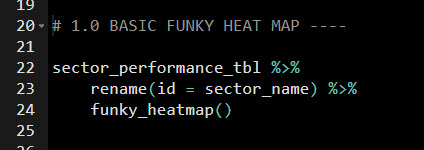
Explain list comprehensions and how they're used in Python. As you can see, the syntax of a lambda function is much more concise than that of a standard function. In this example, we've defined an anonymous function that has three arguments and takes the sum of the first two arguments (x and y) to the power of the third argument (z). Here's an example of how lambda functions are defined and used: (lambda x, y, z: (x+y) ** z)(3,2,2)
Data science basic questions code#
So, instead of formally defining the small function with a specific name, body, and return statement, you can write everything in one short line of code using a lambda function. They're very helpful when you need to define a function that's very short and consists of only one expression. Lambda functions are anonymous functions in Python. Notice how the value 50 is accessed via the corresponding key age. As you can see, the corresponding values can be of different data types, including numbers, strings, and lists. Here, the keys include name, age, and films. A dictionary is created with curly braces and indexed using the square bracket notation. Notably, dictionaries are mutable, which means they can be modified. Dictionaries are indexed by keys, and the values can be any valid Python data type (even a user-defined class). It defines an unordered mapping of unique keys to values. Lists are created with square brackets (e.g., my_list = ), while tuples are enclosed in parentheses (e.g., my_tuple = (a, b, c)).Ī dictionary is one of the built-in data types in Python.Lists are mutable, while tuples are immutable.However, these data types have a number of differences: Explain the difference between lists and tuples.īoth lists and tuples are made up of elements, which are values of any Python data type. Lists, sets, and dictionaries are mutable, which means they can be modified during runtime. Numbers, strings, and tuples are immutable data types, meaning they cannot be modified during runtime. Python has the following built-in data types: Be prepared to explain some specific features of the Python language and also demonstrate that you can explore, visualize, and model a given data set. This set covers some Python coding interview questions and also some non-technical questions. We've selected 15 Python interview questions that are most commonly asked by employers during interviews for entry-level data science positions.

Sample Python Interview Questions and Answers These are the topics that are usually covered in the Python interview questions for data science. Data scientists should be comfortable with basic Python syntax, built-in data types, and the most popular libraries for data analysis.
Data science basic questions software#
Of course, Python requirements for data scientists are different from those for software engineers and developers.


Moreover, Python has plenty of data analysis libraries that make your work easier. Python's readability and simple syntax make it relatively easy to learn, even for non-programmers. Thus, if you work with big data and need to perform complex computations or create aesthetically pleasing and interactive plots, Python is one of the most efficient solutions out there. But how are they going to test this? What are they going to ask? Let's prepare you for some interview questions! Why Do Data Scientists Need Python?ĭata science goes beyond simple data analysis and requires that you be able to work with more advanced tools. Looking for a data science job? Then you've probably noticed that most positions require applicants to have some level of Python programming skills.


 0 kommentar(er)
0 kommentar(er)
